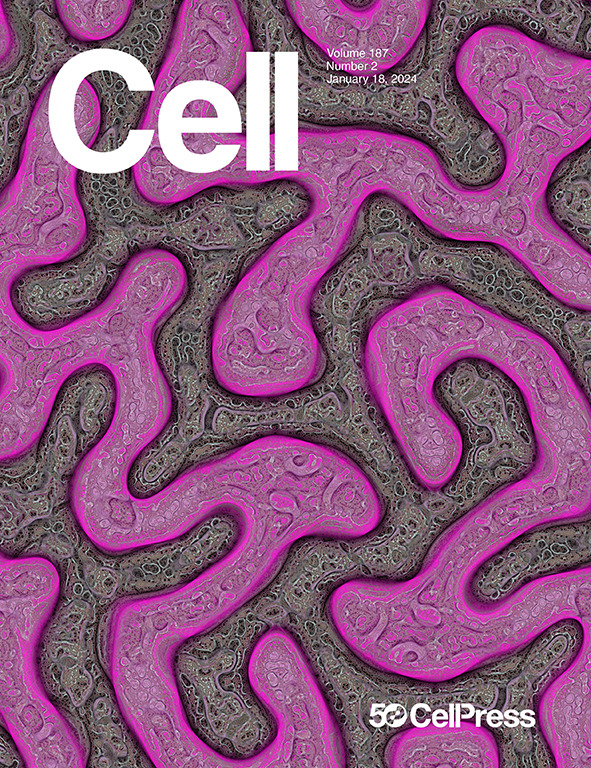脊椎动物中连接精子和卵子的保守受精复合体
IF 45.5
1区 生物学
Q1 BIOCHEMISTRY & MOLECULAR BIOLOGY
引用次数: 0
摘要
受精是有性生殖的基础,精子和卵子的结合与融合是受精的高潮。尽管已知脊椎动物中有几种蛋白质对这一过程至关重要,但人们对其分子机制仍然知之甚少。通过 AlphaFold 多聚体筛选,我们鉴定出了蛋白 Tmem81,它与重要的受精因子 Izumo1 和 Spaca6 是保守的三聚体精子复合物的一部分。我们证明了 Tmem81 对斑马鱼和小鼠的雄性生育能力至关重要。与三聚体的形成相一致,我们证明了 Izumo1、Spaca6 和 Tmem81 在斑马鱼精子中的相互作用以及人类直向同源物在体外的相互作用。值得注意的是,复合物的形成为斑马鱼的卵子受精因子 Bouncer 创造了结合位点。我们的工作为脊椎动物的受精过程提供了一个全面的模型,在这个模型中,一个保守的精子复合物与不同的卵蛋白结合--鱼类中的Bouncer和哺乳动物中的JUNO--从而介导精子与卵子的相互作用。本文章由计算机程序翻译,如有差异,请以英文原文为准。

A conserved fertilization complex bridges sperm and egg in vertebrates
Fertilization, the basis for sexual reproduction, culminates in the binding and fusion of sperm and egg. Although several proteins are known to be crucial for this process in vertebrates, the molecular mechanisms remain poorly understood. Using an AlphaFold-Multimer screen, we identified the protein Tmem81 as part of a conserved trimeric sperm complex with the essential fertilization factors Izumo1 and Spaca6. We demonstrate that Tmem81 is essential for male fertility in zebrafish and mice. In line with trimer formation, we show that Izumo1, Spaca6, and Tmem81 interact in zebrafish sperm and that the human orthologs interact in vitro. Notably, complex formation creates the binding site for the egg fertilization factor Bouncer in zebrafish. Together, our work presents a comprehensive model for fertilization across vertebrates, where a conserved sperm complex binds to divergent egg proteins—Bouncer in fish and JUNO in mammals—to mediate sperm-egg interaction.
求助全文
通过发布文献求助,成功后即可免费获取论文全文。
去求助
来源期刊

Cell
生物-生化与分子生物学
CiteScore
110.00
自引率
0.80%
发文量
396
审稿时长
2 months
期刊介绍:
Cells is an international, peer-reviewed, open access journal that focuses on cell biology, molecular biology, and biophysics. It is affiliated with several societies, including the Spanish Society for Biochemistry and Molecular Biology (SEBBM), Nordic Autophagy Society (NAS), Spanish Society of Hematology and Hemotherapy (SEHH), and Society for Regenerative Medicine (Russian Federation) (RPO).
The journal publishes research findings of significant importance in various areas of experimental biology, such as cell biology, molecular biology, neuroscience, immunology, virology, microbiology, cancer, human genetics, systems biology, signaling, and disease mechanisms and therapeutics. The primary criterion for considering papers is whether the results contribute to significant conceptual advances or raise thought-provoking questions and hypotheses related to interesting and important biological inquiries.
In addition to primary research articles presented in four formats, Cells also features review and opinion articles in its "leading edge" section, discussing recent research advancements and topics of interest to its wide readership.
 求助内容:
求助内容: 应助结果提醒方式:
应助结果提醒方式:


